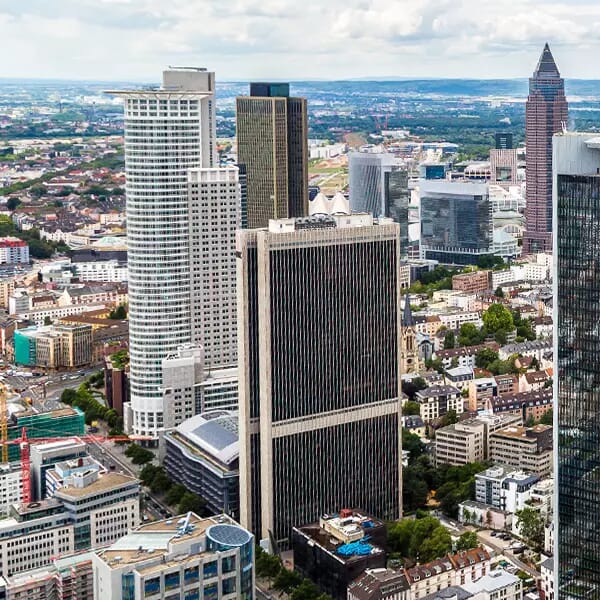 Picture by: Luisa Machacon Photography
Picture by: Luisa Machacon PhotographyWhat are the most important qualities for logistics assets?
Andrew Allen discusses how ecommerce has accelerated the development of the logistics real estate industry.
January 24, 2020Real Estate
Andrew Allen, Global Head - Investment Research RE for Aberdeen Standard Investments, talks about the most important things to consider when looking to invest in a logistics real estate asset.
Equally, we’d also be very interested in the nature of the location, because if our existing tenant were to leave for any reason, then we need to be located somewhere where we can easily find another tenant with a similar standing. And obviously we also look at the tenant quality; so the financial rating and scale, just to make sure they’re able to pay the rent.
Now we’re seeing e-commerce though really fast in the rest of Europe, investors are excited to place capital in European logistics real estate as its just beginning to take off. But what the rise of e-commerce also does is completely shift the supply chain. 10 years or so ago, customers were content with 5 working day delivery. But now in today’s world, consumers want to order that book from Amazon and receive it in the next few hours - certainly within the same day. They need immediate satisfaction. So e-commerce is forcing occupiers (and therefore developers) to be closer to consumers to get the distribution right.
Another thing that it does, is changes the technology that the entire logistics chain uses. The supply chain configuration is having to modernise itself very quickly. What’s then really interesting is that e-commerce is only about 20% of the total take-up of logistics, which means that 80% of the market has absolutely nothing to do with e-commerce. So even the very basic, routine storage spaces are now being affected by global trade patterns and by the sophistication of distribution.
Europe's only event dedicated to light industrial and logistics (GRI Light Industrial and Logistics 2020) is set to return on 4-5 November in Amsterdam. Other upcoming European events, holding region-dedicated discussions on logistics include Deutsche GRI (12 - 13 May), CEE GRI (19 - 20 May) and British & Irish GRI (3 - 4 June).
Article by Matt Harris
When analysing the risk/return fundamentals of logistics assets, what must be considered?
There are many things we take into consideration; the quality of the asset, the design of it, the circulation plan, is it fit for the purpose? What’s the height of the building, is it a quarter-ceiling height? The floorplan is incredibly important for a lot of occupiers, because the sophistication of the equipment in the building is to such a degree that you have to have very precise specifications for the space used.Equally, we’d also be very interested in the nature of the location, because if our existing tenant were to leave for any reason, then we need to be located somewhere where we can easily find another tenant with a similar standing. And obviously we also look at the tenant quality; so the financial rating and scale, just to make sure they’re able to pay the rent.
To what extent has e-commerce been a key factor in driving forward the logistics real estate industry?
Logistics is lots of different things, but ultimately its the storage and distribution of goods. And why a lot of people are interested in logistics real estate right now, is because of the rapid growth of e-commerce. So I’m from the UK, where we’ve seen a strong incline in logistics in the last 10 years or so, where we also have one of the most advanced e-commerce markets in Europe.Now we’re seeing e-commerce though really fast in the rest of Europe, investors are excited to place capital in European logistics real estate as its just beginning to take off. But what the rise of e-commerce also does is completely shift the supply chain. 10 years or so ago, customers were content with 5 working day delivery. But now in today’s world, consumers want to order that book from Amazon and receive it in the next few hours - certainly within the same day. They need immediate satisfaction. So e-commerce is forcing occupiers (and therefore developers) to be closer to consumers to get the distribution right.
Another thing that it does, is changes the technology that the entire logistics chain uses. The supply chain configuration is having to modernise itself very quickly. What’s then really interesting is that e-commerce is only about 20% of the total take-up of logistics, which means that 80% of the market has absolutely nothing to do with e-commerce. So even the very basic, routine storage spaces are now being affected by global trade patterns and by the sophistication of distribution.
Europe's only event dedicated to light industrial and logistics (GRI Light Industrial and Logistics 2020) is set to return on 4-5 November in Amsterdam. Other upcoming European events, holding region-dedicated discussions on logistics include Deutsche GRI (12 - 13 May), CEE GRI (19 - 20 May) and British & Irish GRI (3 - 4 June).
Article by Matt Harris



